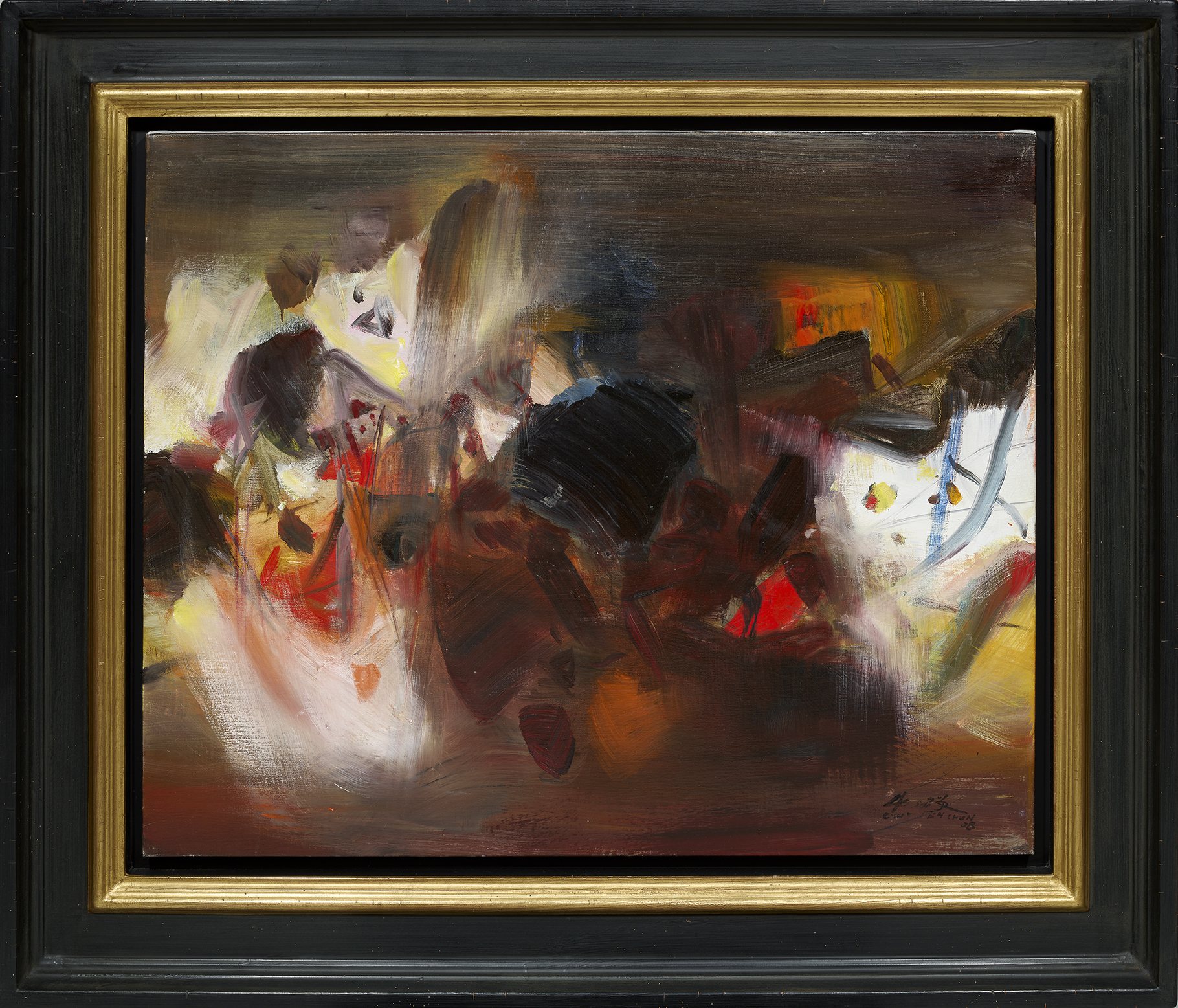Chu Teh-ChunSans Titre
2008
Oil on canvas
Signed and dated lower right
25.59 x 31.89 in ( 65 x 81 cm )ZoomInquiry - Sans Titre, 2008
Certificat
Provenance
Gift from the artist
Private Collection, Paris
Artwork's description
The strength and richness of Chu Teh-Chun's works are issues of the meeting between cultures, Eastern and Western. This canvas characterize this fusion. It combines the tradition of landscape painting and calligraphy "mirror of the Chinese soul“, to the movement of lyrical abstraction. The artist's gestures are both mastered and carried away by this desire for freedom of expression. Different shades of brown dominate this dynamic composition, thus staging a powerful, deep and bubbling nature. Influenced by Rembrandt's classic chiaroscuro, Chu Teh-Chun achieves contrasts of shadow and light, becoming the dual forces of Yin and Yang.
“As a Chinese, yin and yang, two infinitely changing elements in I-Ching philosophies, have fundamental but complementary aspects: yang is warm and bright, and yin is dark and moist. This duality produces the infinite universe, but this duality also mixes with the bright colors of Western European painting and the free forms inspired by abstract painting”.
Chu Teh-Chun
Artist's biography
Chu Teh-Chun, born on October 24, 1920, in Baitou, Jiangsu Province, China, is a prominent artist of the 20th century renowned for his exceptional contributions to abstract art and oil painting. His work is characterized by a unique fusion of Chinese and Western influences, showcasing a profound poetic sensitivity and remarkable technical mastery.
From a young age, Chu Teh-Chun displayed a strong interest in art, particularly in calligraphy and traditional Chinese painting. His early education at the Hangzhou National College of Art, under the guidance of Lin Fengmian, marked the beginning of an artistic exploration that would define his career. In 1955, he settled in Paris, a city that not only became his permanent residence but also a crucial source of inspiration for his artistic development.
Chu Teh-Chun's early works in Paris reveal a gradual transition towards abstraction. Influenced by the dynamic artistic environment of the French capital, he explored innovative techniques in oil painting, developing a distinctive style that combines elements of traditional Chinese art with a contemporary Western aesthetic. His canvases are characterized by energetic brushstrokes, vibrant color juxtapositions, and captivating emotional depth.
The year 1956 was a pivotal turning point in his career with his first solo exhibition at the Galerie du Dragon in Paris. This exhibition solidified his growing reputation in Europe and established his place among the leading contemporary artists. Critics praised his ability to transcend cultural boundaries and create a universally appreciated visual language.
Over the ensuing decades, Chu Teh-Chun continued to explore and refine his abstract style, producing works that celebrate nature, music, and spirituality. His series of paintings, often on a grand scale, reflect a constant search for harmony and balance in artistic expression. He is known for his ability to capture the ephemeral essence of light and movement through lyrical and dynamic compositions.
Among his most iconic works are series such as "Symphony," "Landscape of the Soul," and "Harmony." These series not only illustrate his stylistic evolution but also his profound spiritual introspection. Each of Chu Teh-Chun's paintings invites silent contemplation, revealing layers of meaning that transcend the limits of spoken language.
Alongside his prolific artistic career, Chu Teh-Chun participated in numerous major exhibitions worldwide. His works were regularly featured in prestigious museums and contemporary art galleries across Europe, Asia, and the United States. In 1983, a significant retrospective of his work was held at the National Museum of Modern Art in Paris, marking official recognition of his enduring influence and impact on modern art.
Throughout his life, Chu Teh-Chun received numerous honors and awards, including the title of Commander of the Order of Arts and Letters in France. His contribution to contemporary art transcended cultural boundaries and continues to inspire generations of artists worldwide.
Chu Teh-Chun passed away on March 26, 2014, in Paris, leaving behind a profoundly influential artistic legacy. His work remains a celebration of timeless beauty, creativity, and the expressive power of abstract art, reminding us all of art's ability to transcend differences and create universal connections between cultures and individuals.
